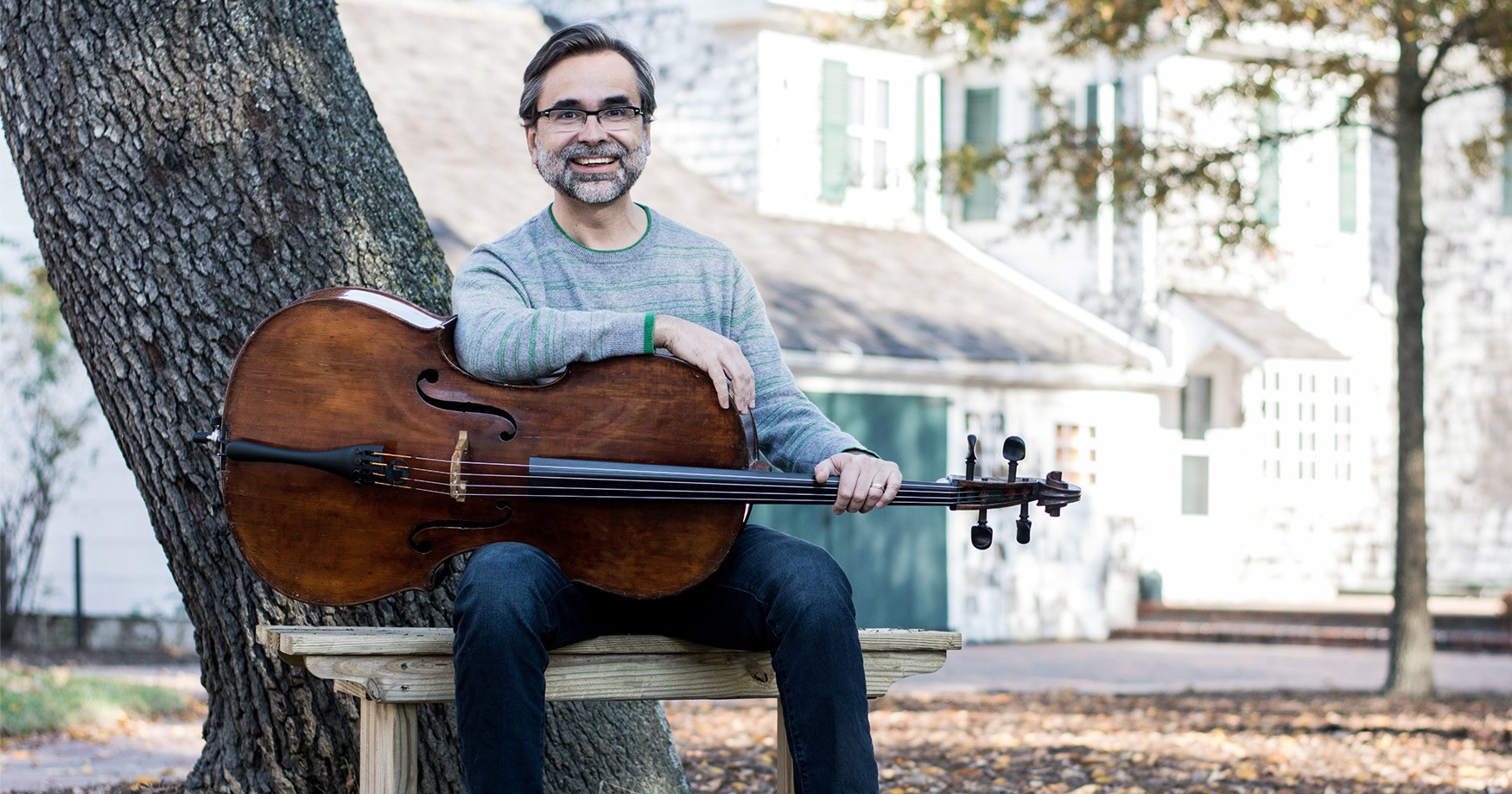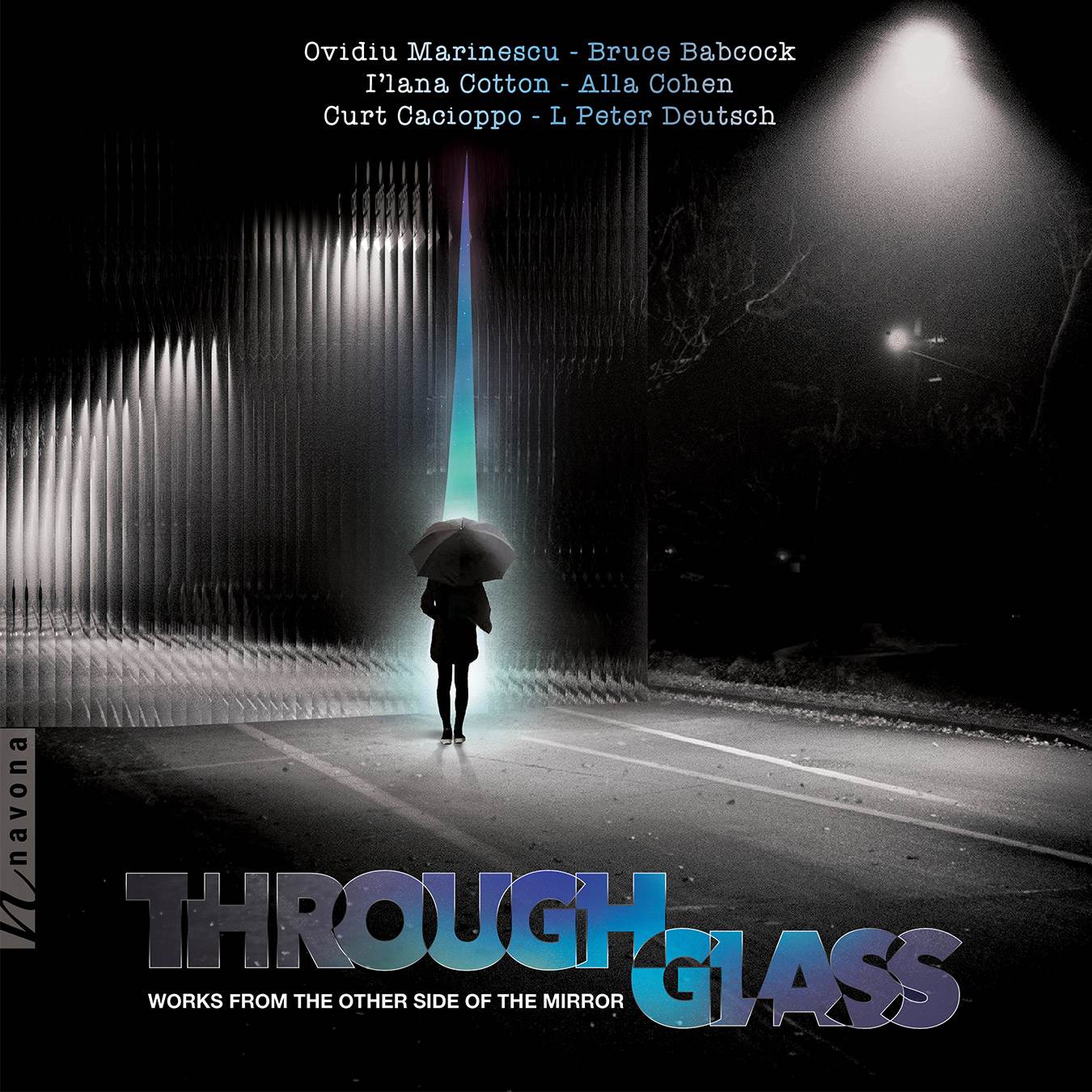Navona Records presents some of the finest American voices of modern serious music on THROUGH GLASS, a brand-new compilation of recently-created works for piano – both solo and in chamber setups.
Ovidiu Marinescu’s Rorrim for cello and piano makes the start. Loosely based on a motif by Johann Sebastian Bach, it could be called a concept piece: its title, “mirror” spelled backwards, is reflective of the mirrorings and variations of Bach’s fragment therein.
Today, Ovidiu is our featured artist in “The Inside Story,” a blog series exploring the inner workings and personalities of our composers and performers. Read on to discover how a Romanian government mandate helped lead him on his musical path…
What’s your earliest musical experience?
Possibly what inspired me to pursue music was a series of concerts I attended as a second grader in Bucharest, Romania, hearing the National Philharmonic play in the historical Romanian Athenaeum, a spectacular building dating from 1888. The hall is lavishly decorated, with a spectacular fresco wrapping around the circular auditorium, with the names of philosophers, writers, musicians inscribed on ornate plaques on the ceiling, as well as all the sciences and the arts represented in similar decorations. I remember gawking at the beauty of the hall, unable to focus on the stage, listening to the music while my neck got twisted for the full concert.
Tell us about your first performance.
In third grade, despite my completely unknown interest or inclination for music, I insisted I start playing an instrument. Based on government regulations, third graders could only start on the cello. I probably made decent progress and I stuck with it. Early performances were “end of the semester” juries and some orchestra concerts. During my last year in middle school, sometime in the spring, my cello teacher selected me to be one of the performers for a concert featuring young talents from the George Enescu Music Lyceum, where I had been studying since fifth grade. It was supposed to be a Sunday afternoon performance. The piece selected was Elegy by Gabriel Faure. After rehearsing with Prof. Tomescu, the pianist, on the day of my debut I showed up at the address downtown, which turned out to be the headquarters for the Ministry of Internal Affairs – really the police headquarters. Probably some employees were “invited” to attend the performance, certainly parents, and I could care less about who is listening. Here I was on stage, in my first performance, playing a beautiful piece. That got me hooked on the power of performing.
What are your hopes for this album?
I hope that the music will connect with a lot of listeners. There is a thread connecting all the pieces featured, which I think is a yearning to communicate ideas and feelings, which vary from composer to composer. With my piece, I wanted to write not just beautiful music, but a song that has thought and a bit of strangeness at the same time.
How do you prepare for a performance?
It takes a long time to get ready for a convincing performance. From selecting the music, to finding the right edition, to clarifying score details, these are the essential first steps. If I have the opportunity to communicate with the composer, that’s a great asset, as my goal is always to bring to life a composer’s voice, to tell someone else’s story. Then, hours and hours of preparation, not only learning notes, rhythm, dynamics, tone colors, but also becoming the piece, becoming the story. It only happens with time, living with a work for a while.
If you could work on a project with anyone, who would it be?
If I could collaborate with anyone, it would be the London Symphony Orchestra.




